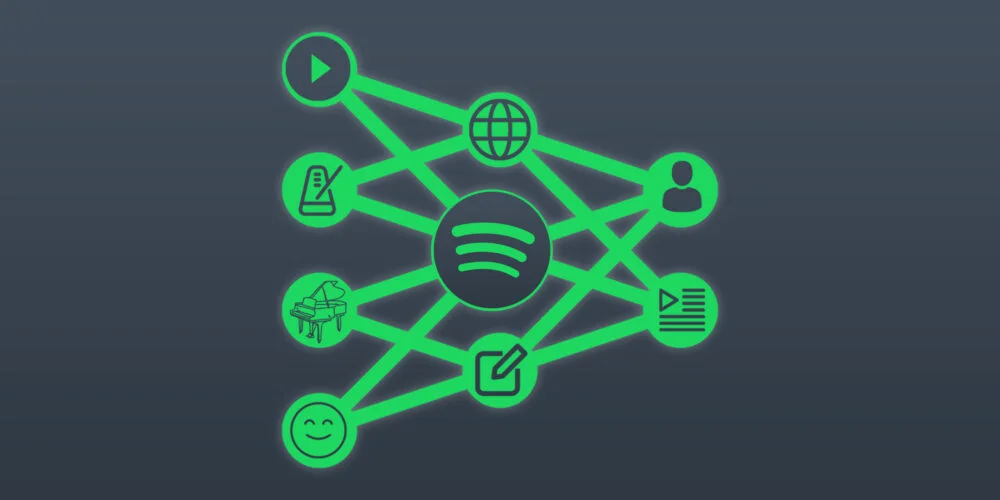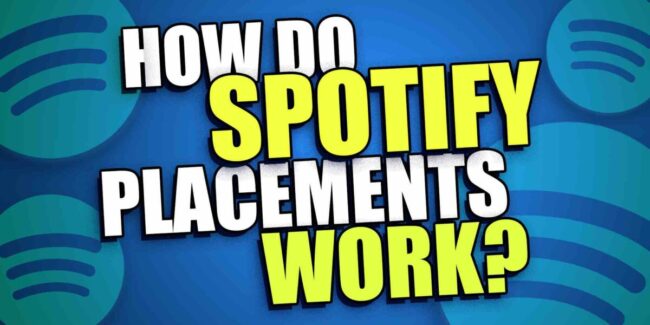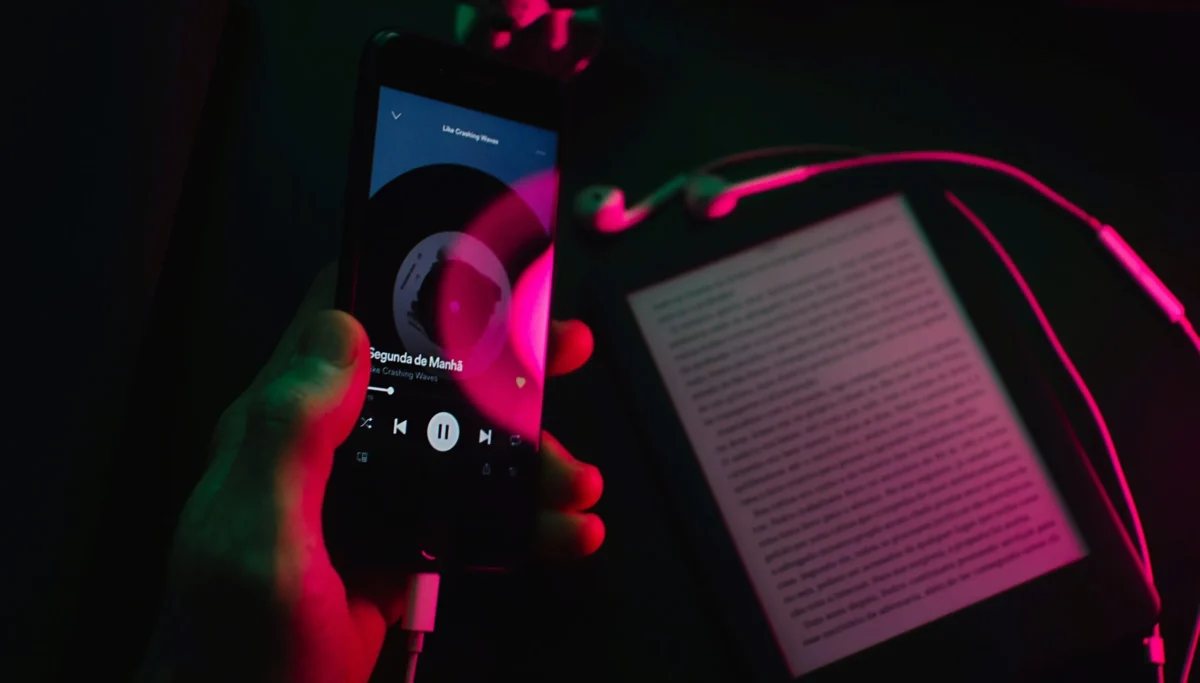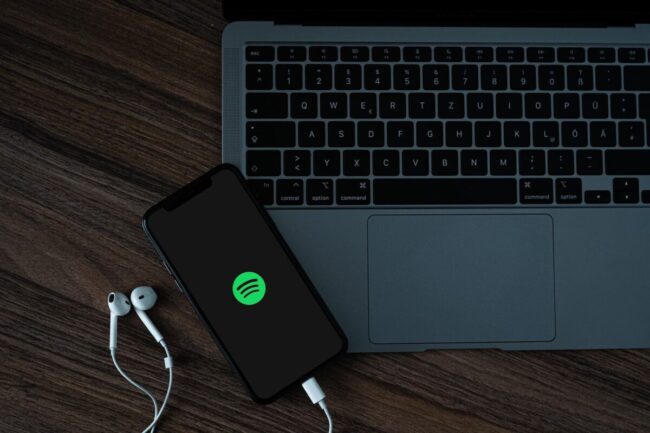Getting your music in front of potential fans can be difficult, especially on streaming services like Spotify. While the platform is great for recognising its user’s music tastes and creating bespoke playlists, how does it work in the favour of musicians?
In this article, we’ll be exploring exactly how Spotify’s algorithm works, providing tips and tricks for musicians to ensure their music is listened to by the right people.
Spotify’s algorithm explained

It’s no secret that Spotify is recognised as the world’s leading music streaming platform with a staggering 500 million+ monthly users. Not only does it have an extensive music library, but it promises a bespoke experience for each listener.
Finding your next favourite song has never been easier. Spotify carefully considers your listening habits and creates bespoke playlists just for you. Music discovery is now driven by the platform’s recommendation algorithms, transforming the way we listen to music.
So, how does it work? To put it simply, Spotify’s algorithm extracts metadata, performs audio analysis, and considers cultural contexts to offer precise suggestions. Content-based filtering is the science behind the recommendations, pinpointing danceability and the emotions conveyed through lyrics before suggesting to a listener.
Suggesting songs that Spotify knows are familiar with the individual’s listening habits ultimately keeps listeners coming back for more.
How does this work for musicians?
It’s important to note that Spotify’s algorithm is driven by statistics. It notices how listeners engage with different types of music to ensure they are being recommended what’s most suitable for them.
Spotify also has a 30-second rule. If a listener gets past the 30-second mark of any song, the platform records this as positive data. And, it’s at that point of a track where the stream is monetized. That’s why those first 30 seconds are so important – you must engage the listener to please the algorithm.
You should also create a Spotify artist account so that when you do gain new followers, they can be notified of any new music. And, you’ll be certified once you’ve been approved access. Verification is now available for all artists – there’s no need to fill out a form or have a minimum of 250 followers as was required previously.
As an artist, you shouldn’t always rely on the platform’s algorithm to get your music out there. It takes time and effort to ensure your music is enjoyed by potential new fans.
If you’re hoping to stand out from the crowd, there are several ways you can apply for funding for musicians, which can help support the creative and professional development of your entire brand.
Understanding Playlist Placement

Understanding playlist placement on Spotify is key for artists seeking exposure. Playlists like Discover Weekly and New Music Friday are crucial for new music discovery, combining algorithmic analysis with human curation. As an artist, comprehending the criteria for these playlists is vital. It involves aligning your music’s style and mood with the theme of the playlists. Success in playlist placement can significantly boost your visibility and listenership. Being featured on a popular playlist leads to increased streams and helps your tracks reach a broader audience. Therefore, tailoring your music and marketing efforts to meet the preferences of these influential playlists can be a strategic move in your music career, enhancing your chances of being noticed on the world’s leading music streaming platform.
The Role of User Interaction
User interaction on Spotify plays a significant role in boosting an artist’s visibility. When listeners save a track, add it to their playlist, or share it with friends, it sends a strong signal to Spotify’s algorithm. These actions indicate user engagement and satisfaction, prompting the platform to recommend the track to other users with similar tastes. Therefore, artists should encourage their fans to interact with their music on Spotify, as this can lead to increased recommendations and visibility within the app.
Beyond just listening, the way users engage with a track – whether they play it repeatedly, skip it, or save it – greatly influences its algorithmic ranking. Artists can leverage this by promoting their Spotify tracks on social media and other platforms, urging their audience to interact more with their music on Spotify.
Release Strategy for Maximum Impact

Your release strategy can influence how Spotify’s algorithm perceives your music. Releasing singles regularly, instead of dropping a full album at once, can keep your listeners engaged and your music consistently in the algorithm’s radar. Frequent releases signal to Spotify that you are an active and relevant artist, potentially leading to more playlist inclusions.
Leveraging Spotify Analytics
Spotify Analytics, offered through Spotify for Artists, is an invaluable tool for musicians. It provides in-depth data about who is listening to your music, including demographics like age, gender, and location, as well as how they discover your tracks. This information is crucial for understanding your audience and tailoring your music and marketing strategies to better resonate with them. By analyzing trends in listener behavior and preferences, artists can make informed decisions about song releases, promotional activities, and even tour locations.
Furthermore, Spotify Analytics can reveal which songs are most popular with your audience and which playlists are driving the most traffic to your music. This insight allows artists to identify their most engaging content and focus their efforts on what works best. Leveraging this data effectively can lead to more targeted and successful marketing campaigns, ultimately enhancing an artist’s presence and success on the platform.
Collaborations and Networking

Collaborations in the music industry, especially on platforms like Spotify, can significantly widen an artist’s reach. When artists collaborate, they expose their music to each other’s audiences, potentially attracting new fans. This cross-pollination of fan bases can lead to a surge in streaming numbers and broaden an artist’s listener demographic. Collaborations often bring together diverse styles, creating unique tracks that stand out, which can be more appealing to playlist curators and listeners alike.
Networking is equally crucial. Building relationships with other artists, playlist curators, and industry professionals can open up new opportunities for exposure and playlist placements. Engaging with the music community, attending industry events, and actively participating in music forums can lead to collaborations and other promotional opportunities. Networking not only helps in gaining visibility on streaming platforms but also fosters a supportive community for artists.
